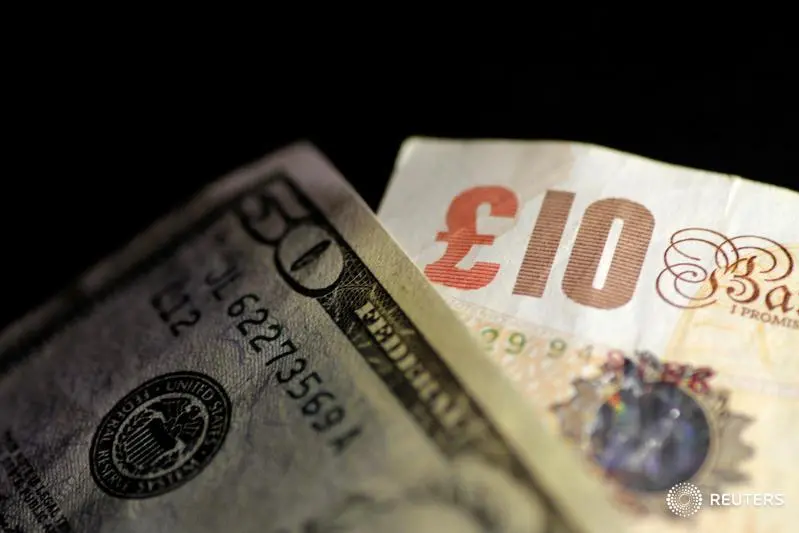PHOTO
British Pound Sterling and U.S. Dollar notes are seen in this June 22, 2017 illustration photo.
The dollar hovered near a six-week high on Friday ahead of crucial jobs data that could dictate the path of U.S. interest rates, while the pound gained some ground after a steep selloff a day earlier.
The dollar got a boost from safe-haven demand as investors weighed up the widening Middle East conflict and its impact on the global economy, while investors priced in more dovish central bank moves into the likes of the euro, sterling and Japanese yen, which also provided support for the U.S. currency.
The dollar index, which measures the U.S. currency against six others, was last at 101.85, hovering near Thursday's six-week peak of 102.09. The index is up nearly 1.5%, for the week, its strongest such performance since April.
"Over the last couple of weeks, there has been a rethink that it's not just about the Fed: other central banks are cutting (rates) too, and some of them are cutting potentially at a faster pace ... and that's played to the dollar's advantage," said Paul Mackel, head of FX research at HSBC.
Sterling ticked 0.3% higher after Bank of England Chief Economist Huw Pill said the British central bank should move only gradually with cutting interest rates, a day after the pound slumped 1% as Governor Andrew Bailey was quoted saying said BoE could move aggressively to lower rates.
The euro was flat at $1.1029, having dropped for the past five straight sessions.
The spotlight on Friday, though, will be on the U.S. non-farm payrolls report, after data on Thursday showed the U.S. labour market gliding at the end of the third quarter.
Economists polled by Reuters expect 140,000 job additions, while unemployment is anticipated to keep steady at 4.2%.
"Most of the labour market indicators this week have been on the strong side, so the balance of risks is that we see more aggressive easing in the U.S. being taken out," said Geoffrey Yu, senior EMEA market strategist at BNY.
Markets are contending with an improving U.S. economic picture and a more hawkish tone from Federal Reserve Chair Jerome Powell, who dashed some hopes on Monday that it would go big on interest rate cuts again next month.
Markets are pricing in about a 30% chance of the Fed cutting interest rates in November by 50 basis points (bps), down from 53.3% last week, the CME FedWatch tool showed. The Fed cut interest rates last month by 50 bps.
"The sweet spot for the market would be an inline unemployment number and slightly higher than consensus payroll print," said Jefferies' Europe chief economist Mohit Kumar.
"A low number would raise concerns over the economy while a too high number would reduce expectations of a Fed support."
Sterling attempted a recovery after sharp losses on Thursday when Bailey said Britain's central bank could become "a bit more activist" and "a bit more aggressive" in its approach to lowering rates.
On Friday, the pound last fetched $1.31690, down about 2% from its two-and-a-half-year high last Friday. It is still the best performing G10 currency this year, largely on market expectations the BoE would keep rates higher for longer.
"I've been relatively bullish on the pound throughout the year, but it's getting to levels where it's looking slightly stretched," BNY's Yu said. "Over the last six months, we've seen the steady reduction in short positions ... and that probably just needs a bit of a reversal."
Regaining some ground lost over the week, the yen rose 0.3% to 146.47 per dollar, though it remained close to an over six-week low of 147.25 hit a day earlier.
The yen was headed for its weakest weekly performance since May 2022 as investors digest a plethora of dovish comments from Japanese politicians and policymakers. Chief among them was Ishiba's statement that the economy was not ready for further rate hikes - a surprisingly blunt remark that pushed the yen lower.
With Japan's general elections set for Oct. 27, analysts broadly expect the BOJ to hold rates in the near term.
(Reporting by Medha Singh in London and Ankur Banerjee in Singapore; Editing by Edwina Gibbs, Angus MacSwan and Mark Heinrich)





















